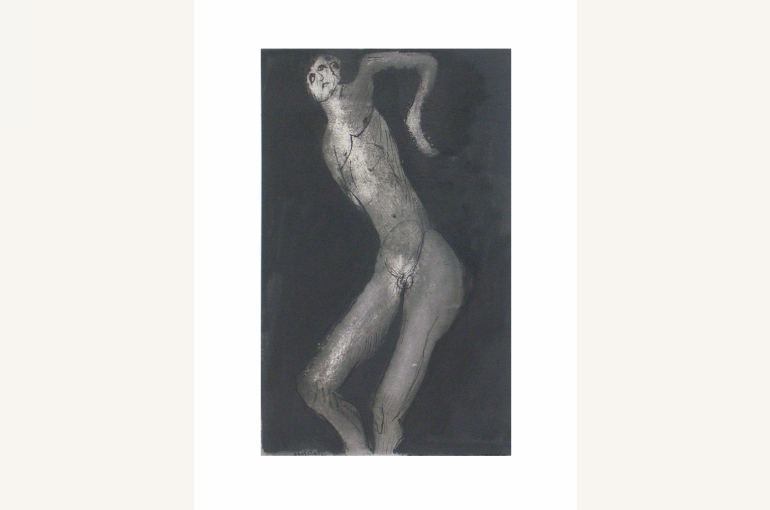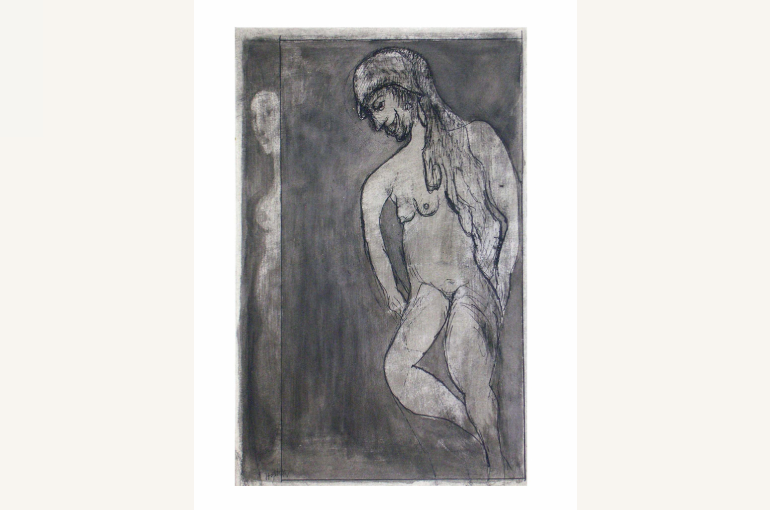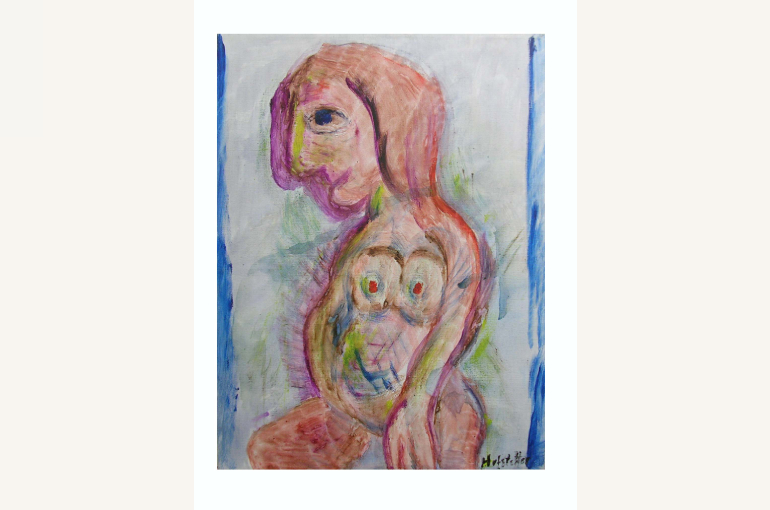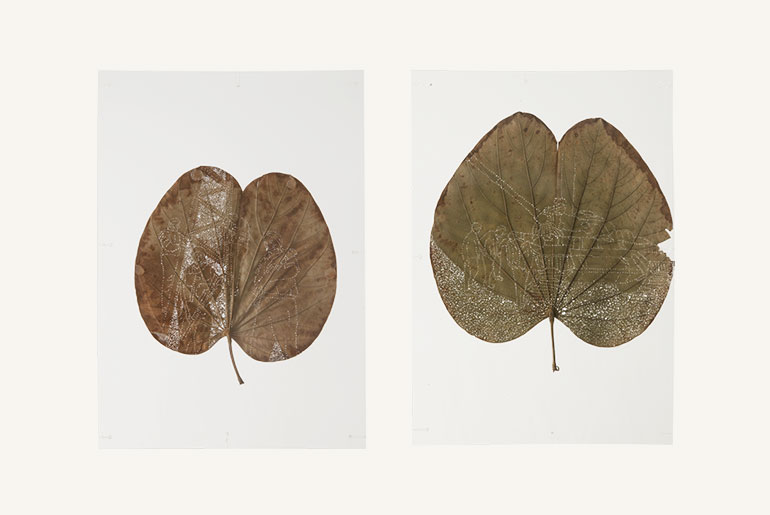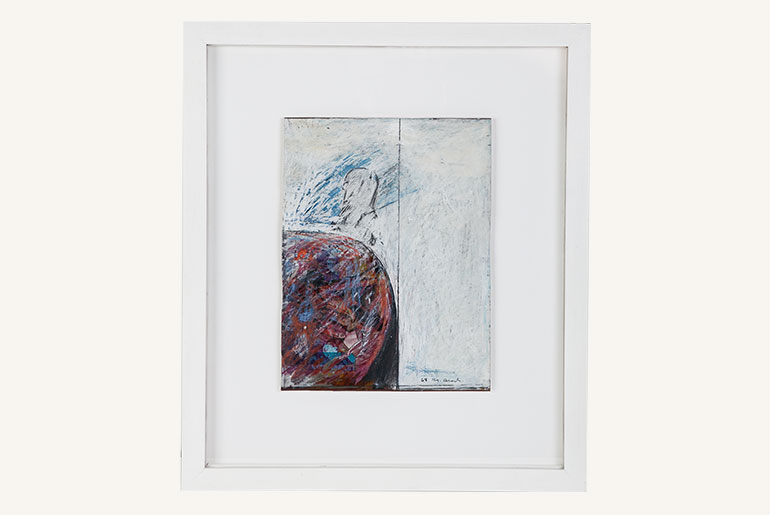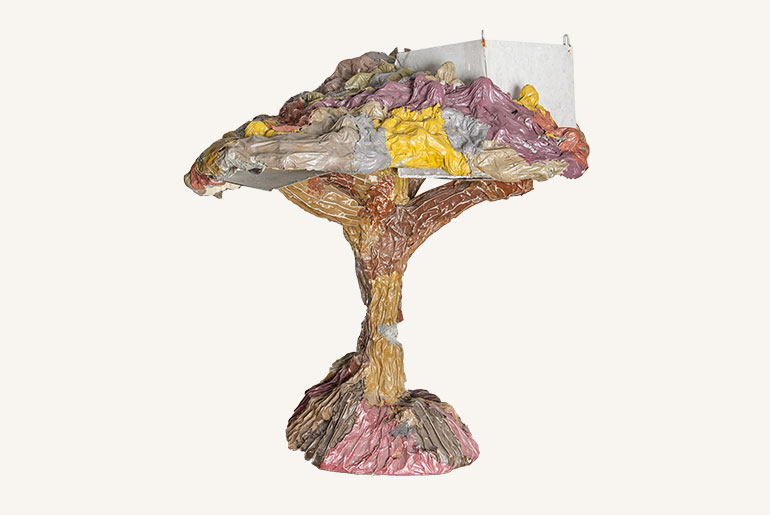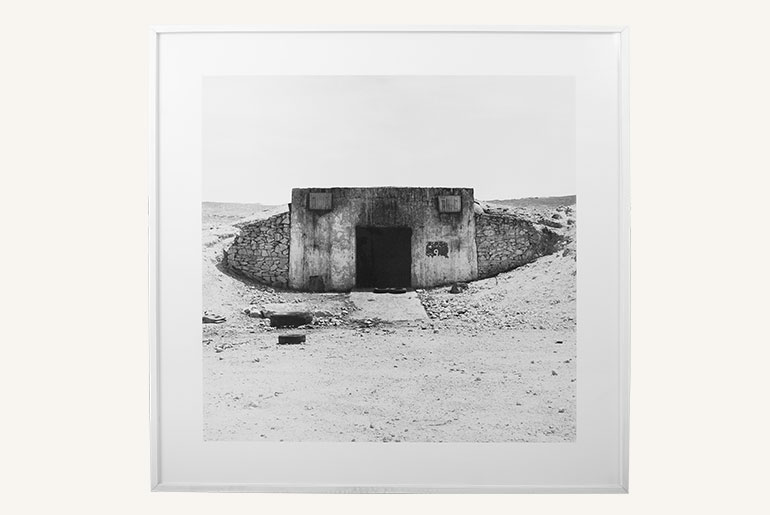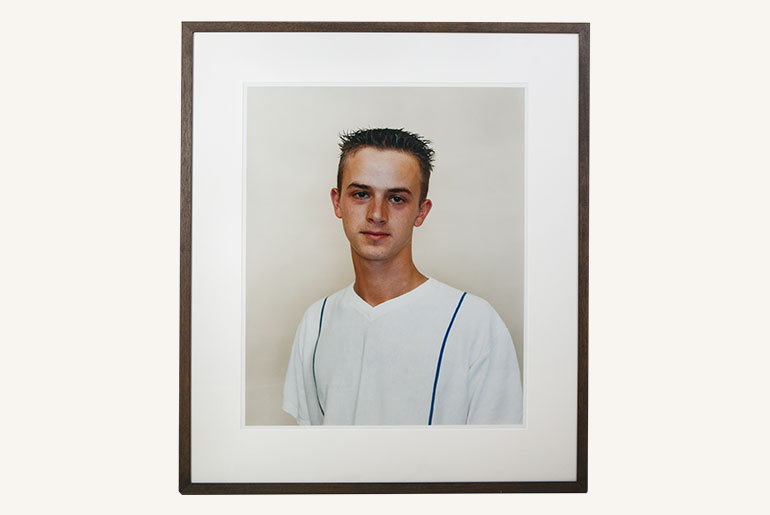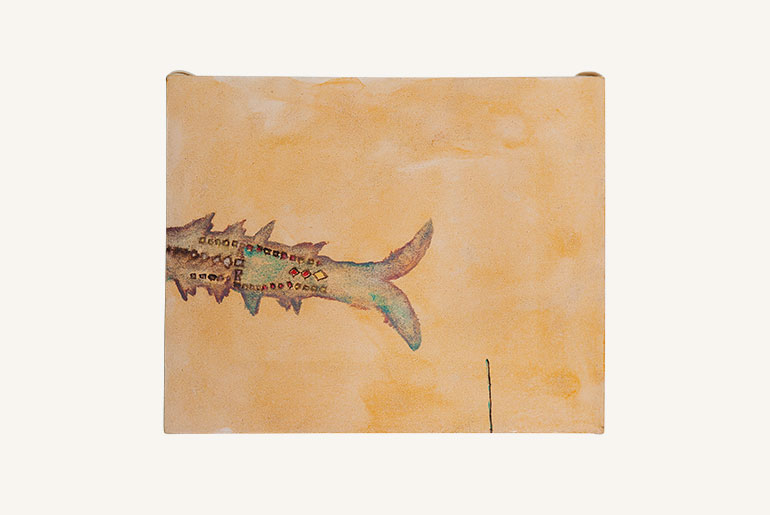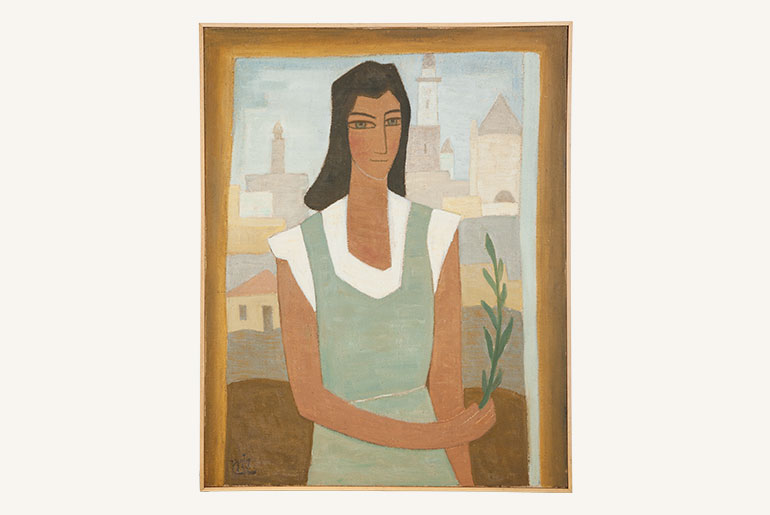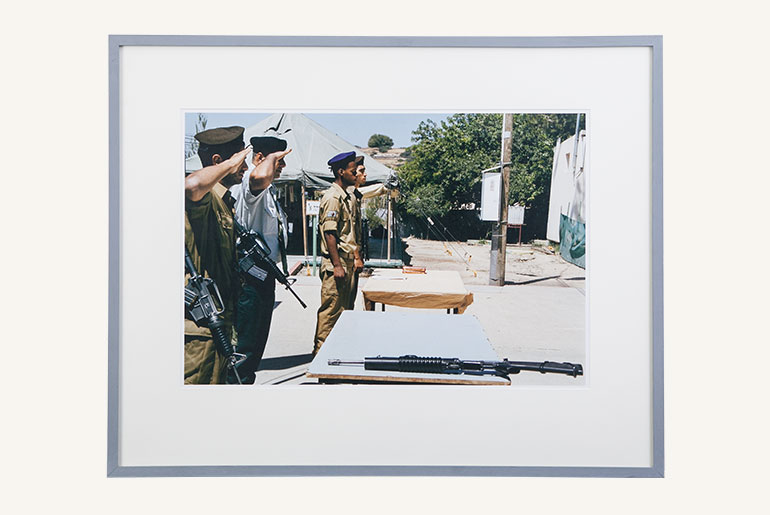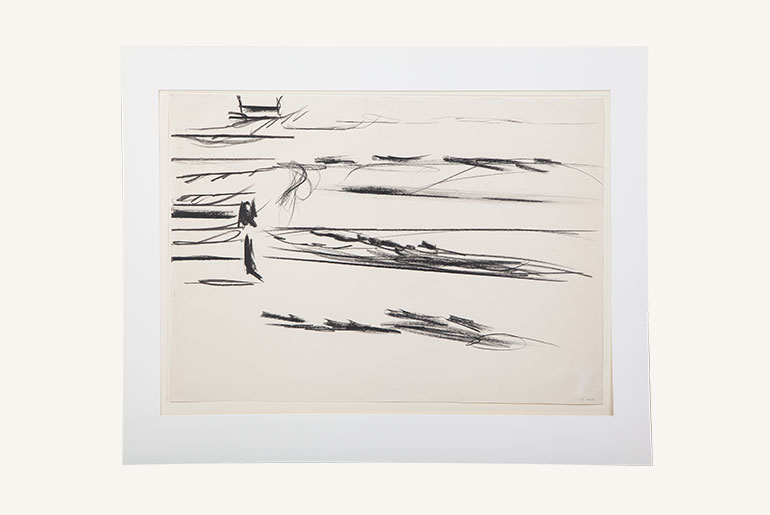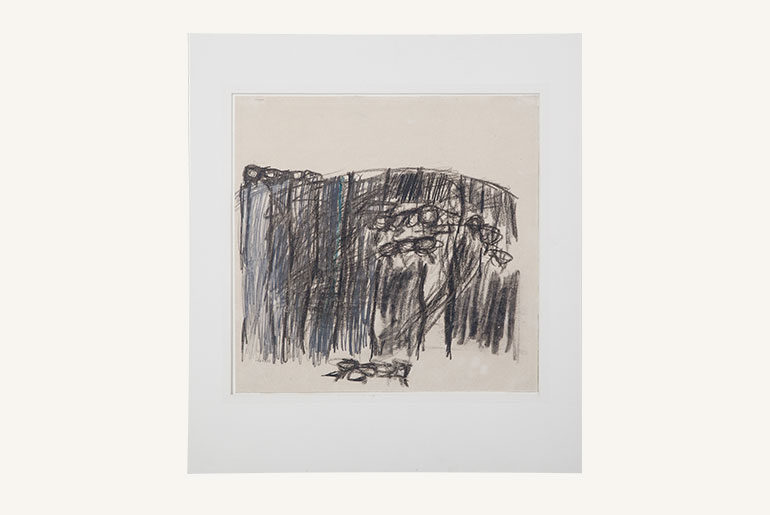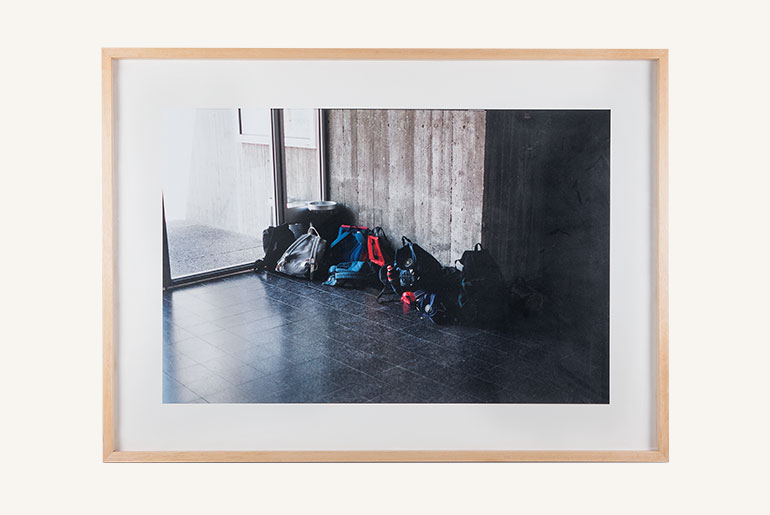The Herzliya Museum of Contemporary Art Collection began with a collection of paintings that were mostly donated by Herzliya resident Eugene da Villa in the early 1960s, which was exhibited in the museum’s first location – an apartment on 15 Bar Ilan Street in the city. In 1975 the new museum building was inaugurated, which was combined with the Beit Yad Labanim military memorial building. In those years, the museum presented, alongside eighteenth- and nineteenth-century art works from the Da Villa collection, archaeological finds from the Apollonia site on the Herzliya shoreline. In 2000 the museum was separated from Beit Yad Labanim, and its collection became more focused on art. Currently, the museum’s collection – comprised of several sub-collections – includes over three thousand works.
In the 1980s, Yoav Dagon, then the museum’s director, placed special emphasis on stone and clay sculpture. The museum’s collection includes over two hundred sculptures collected over the years. In 2016 a sculpture by Yaakov Dorchin, 2011 Israel Prize in Plastic Arts Laureate – Blocked Well with Iron Casing and Turret (1993-1995) – was installed at the entrance to the museum, generously gifted by Talma and Eliezer Levin, who are members of the Friends of the Herzliya Museum Association.
Under the direction of Dalia Levin, from 1993 to 2013, the museum focused on Israeli and international contemporary art, particularly photography and video art. At the same time, the museum’s collection was expanded by several collections donated to it: the collections of Jacob Alkow, Osias Hofstatter, and Yona Fischer. In addition, many artists exhibited by the museum gifted their works to it over the years.
Dr. Aya Lurie, who has served as the museum’s director since 2014, has further developed the collection as a key part of the museum’s activity. In addition to its artistic value, she regards the display and exploration of the collection as an important means of forging ties between art and the community. “The museum,” she maintains, “must keep its finger to the pulse, always looking forward while allowing the past to resonate in the present.”
The Jacob Alkow Collection includes 43 works by Jewish artists, including Max Liebermann, Raphael Soyer, and Max Weber, as well as key works by important American artists of the late nineteenth and early twentieth century, such as Marsden Hartley, George Luks, Milton Avery, and William Trost Richards. It is an eclectic collection of art works in a variety of styles and mediums, as well as decorative art objects from East Asia. The Osias Hofstatter Collection includes the estate of this painter, known in Israel as an esteemed “Holocaust artist.” These works reveal him to be a gifted humanist who touches on the finest threads of human suffering, examining it only to transcending it by expressing universal emotions and notions. The Michael Adler Collection includes mainly works from the 1970s, completing a significant artistic chapter in the museum’s collection. It is comprised of works by established Israeli artists, such as Joseph Zaritsky, Avigdor Stematsky, Arie Aroch, and Michael Gross, as well as conceptual and post-minimalist Israeli artists, such as Benni Efrat, Pinchas Cohen-Gan, Nahum Tevet, Joshua Neustein, Avital Geva, and Zigi Ben-Haim. The Yona Fischer Collection, donated to the museum by Fischer himself, reflects the importance of his curatorial work over six decades, which to a great extent has defined the field in Israel. It is an expression of Fischer’s refined personal taste and curiosity. Works from the Herzliya Museum of Contemporary Art Collection are constantly on view in its exhibitions, as well as on loan to museums in Israel and internationally.
Museum Collections
-

Jacob Alkow Collection (1902-1999)
Jacob Alkow lived an intriguing life full of upheavals, and art played a prominent role in it. The international eclectic collection is comprised of 43 works of plastic art in a variety of styles and techniques, most from the 20th century, with a minority of works from the 19th century and even earlier.
-

Michael Adler Collection
The Herzliya Museum of Contemporary Art is home to the Michael Adler Collection, which includes about fifty works by a variety of Israeli artists from the 1960s to the 1990s
-

Corona Diaries
Out of a wish to get involved, to take actual action, to acknowledge the situation and respond to it through a plastic artwork, the management of the Friends of the Herzliya Museum decided, courtesy of the Prof. Michael Adler Foundation, decided to acquire works for the museum’s collection depicting the COVID-19 pandemic period. Therefore, an open call was published for artists, and at the end of the process, the museum acquired 10 series that documented one week under pandemic restrictions: “Corona Diaries.”
-

Michael Argov Collection
The artistic development of Michael Argov (1920-1982) reflects the character of an artist-researcher, relentlessly searching for new visual expressions and techniques, as well as ideological expression. In the 1970s, Argov turned to minimalist geometric abstraction and Op Art, achieving prominence in this style. He advocated for liberating art from its traditional spaces and created monumental public works in Israel.
-

Zeev Ben-Zvi Collection
Zeev Ben-Zvi (1904, Poland – 1952, Israel) was an artist and educator, one of the pioneers of modernism in sculpture in Israel. He is best known for his sculpted portraits of Zionist leaders and British Mandate figures, alongside monuments and public sculptures The sculptures in the collection, most of which were created in the 1930s and 1940s, reflect the cubist-stylization that became synonymous with the artist’s style.
